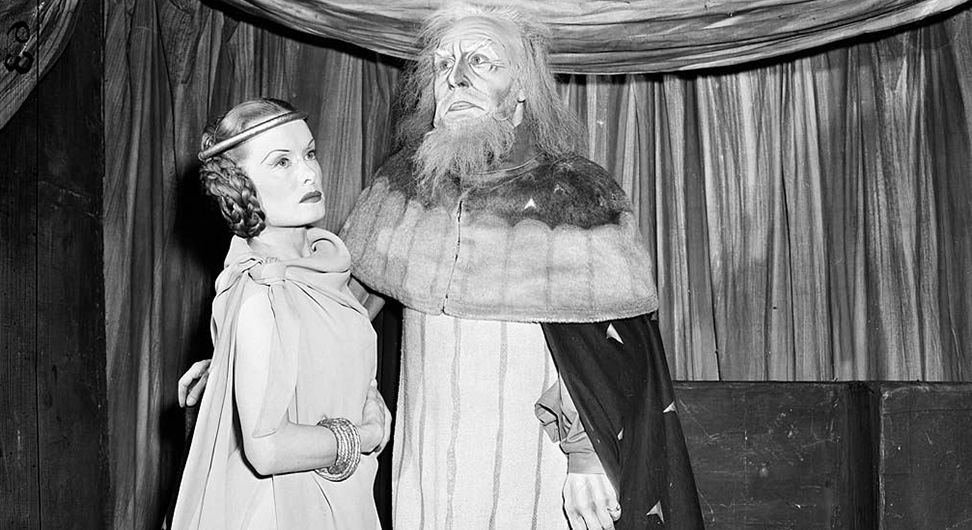Playing Dress-up: The Job Interview
For such a ubiquitous part of professional life, job interviews are surprisingly difficult to dress for. The traditional conservative suit and tie is gone, outside of stodgier fields like finance and law. Button-downs, jeans, bright colors, chic workman wear—the options can seem limitless at times.
Limitless, that is, until you realize that you’re dressing so that your potential employers will like you.
That statement isn’t entirely fair to employers. Most of this judgment is subconscious. No one expressly sets out to not hire the guy wearing a suit and tie, it just happens after you’ve interviewed other candidates in the same plaids, ginghams and button-downs as you—candidates who are dressed like they already work at the agency. Culture fit is key. No one wants this to happen:
“How do we make sure this doesn’t happen us?” you’re undoubtedly asking. “And why are we asking an underemployed, suit-wearing fast food columnist?”
Both good questions. Start by looking at what people who work in your desired profession are wearing. It also helps to scan photos of the staff on the company’s website, to get a better snapshot of its specific sartorial culture. Then, plan your outfit with a specific idea of what you’re trying to accomplish. To further illustrate this concept, let’s look at a few cases:
The Entry-Level Job
With entry level positions, employers are more forgiving. Plenty of applicants show up wearing conservative, professional clothing because that’s what their parents told them to wear. Others overthink their business casual outfit because they really, really, really need the job.
The only hard and fast rule for these is to never be more dressed up than the person interviewing you. Take it from an expert: you do not want to stroll into a job interview wearing a double-breasted suit and Canali tie only to sit across the table from two people wearing gingham button-downs and jeans.
In the second episode of the HBO series Girls, Lena Dunham’s character Hannah has a job interview at an unspecified company. It’s not a big or exciting job. It’s more of a short-term solution after her parents cut her off in the series premiere.
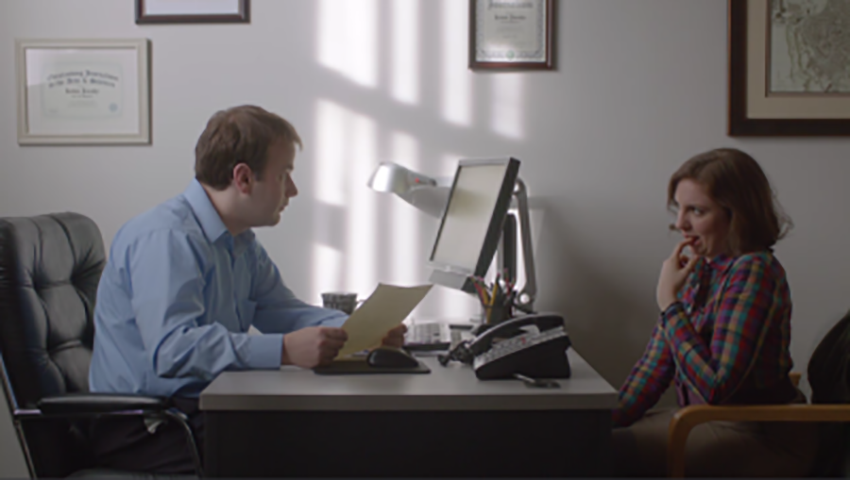
The outfit: Hannah wears a nice colorful blouse, a high-waisted skirt, leggings and a belt. It looks and feels like something she’d wear any day. She’s comfortable in it, and it’s professional, while still being slightly more casual than the light blue shirt and slacks worn by the person interviewing her. The interview goes poorly, but it’s not the outfit’s fault.
The Agency Is Looking to Hire Young
Sometimes an agency might not be looking for a culture fit; it might be looking to shake up its culture instead. In an industry like advertising, that’s dead-set on looking as trendy as possible at all times, both the employer and the applicant are in an arms race to see who can look more “with it.” [Editor’s note: Alt-weeklies have a similar office culture, and no one knows why (or, really, if) the writer gets away with dressing like a conservative 60s businessman.] Luckily, Mad Men, a TV show based on this industry, has given us an excellent example of this scenario.
The year is 1962. Sterling Cooper, an advertising agency on Madison Avenue, is looking for some young talent. Or rather, the head of accounts wants Draper to hire a young creative team to show off to clients. Knowing this, Kurt and Smitty dress like young people.
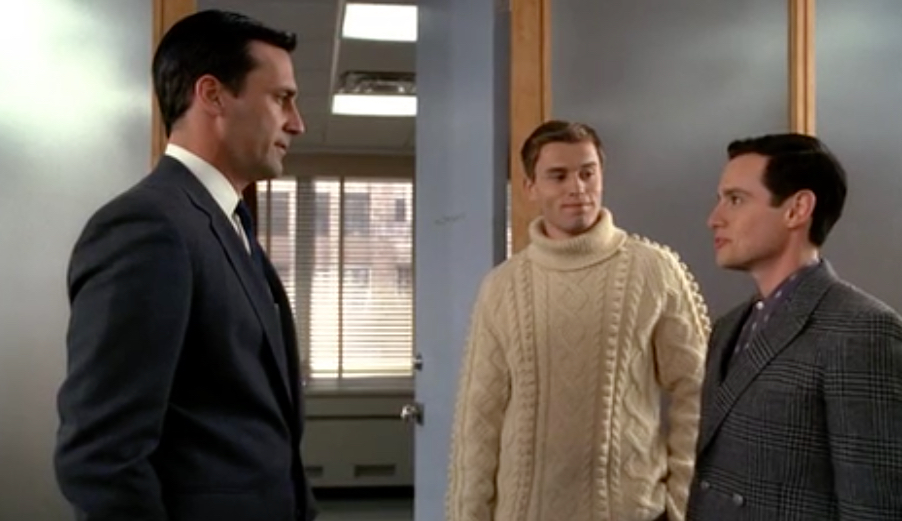
The outfits: Smitty’s plaid, double-breasted sport coat and polka dot shirt and Kurt’s cable knit turtleneck stand out in stark contrast to Don Draper’s suit, white shirt and tie. Neither of these looks are particularly young or creative by today’s standards, but they’re essentially the OCBD and jeans of the early 1960s. These kids are hip. Clients will know that these kids are in touch with youth culture at first glance.
Interviewing for the Same Position, Elsewhere
Not every interview is for your first job or your first big break. Nor is every job interview for a promotion. Sometimes, you’re just looking to do the same thing, somewhere else. Maybe you need to try a different pond, fearing that your career has grown stagnant. Maybe your (absolutely correct) belief that jeans are one of the most ghastly sartorial fads ever foisted upon the modern office never quite meshed with your previous agency’s culture. Or maybe, as in the case of Marnie, you skipped town after stealing $9,967 from your previous employer. Whatever your reason, it’s time for a change.
This interview outfit should come naturally, as you’ve been wearing it for years. Perhaps you go a bit more businessed-up than usual—this is a job interview, after all—but you know what is expected of you, and you have the confidence of knowing that you’ve already tricked at least one other company into hiring you before.
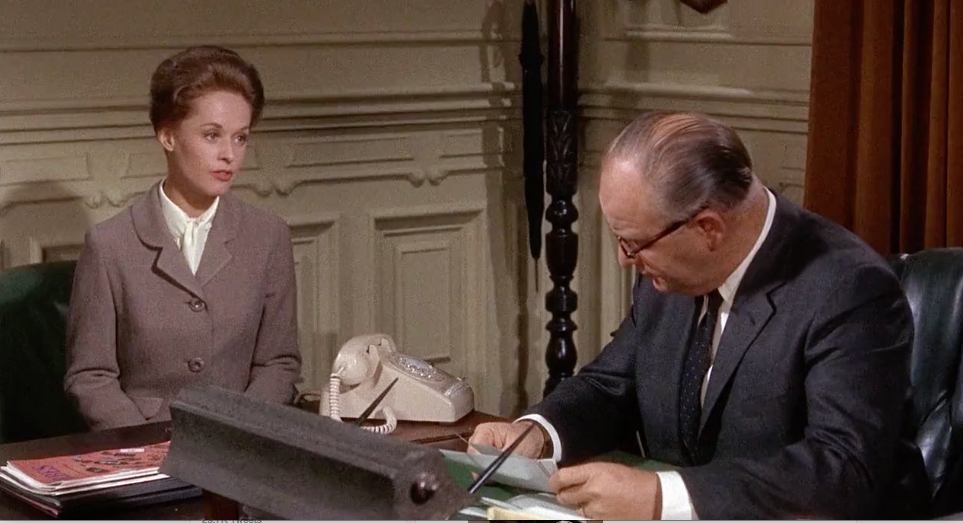
The outfit: Between the light grey skirt suit and white ascot or scarf thing, Marnie is dressed in full business attire. She is less colorful than the other workers at similar positions, but the more conservative taupe is the safer bet here. Her prospective boss is dressed more conservatively, as was the style at the time. She has also changed the color of her hair, but you would too if you were a wanted criminal.
The Group Interview
Group interviews are a weird, clunky format that I sincerely hope none of you ever have to endure. While many job interviews feature more than two people, it only feels like a crowd when there is more than one applicant. You are no longer the focus of the interview; you are now one of several hungry, hungry hippos fighting over the marbles of gainful employment.
The good news is, group interviews often mean there are multiple positions to be filled. The bad news is that those snap judgments and first impressions are really going to matter.
One of my friends was involved in hiring applicants from a large pool into an almost equally large number of open positions. These were engineering positions, mind you, so the only sartorial requirement is that they manage to look presentable. Only two candidates did not leave the interview with jobs: one lied on his resume, the other showed up in jeans and a tank top.
Take one look at this photo and guess which candidate does not get hired.
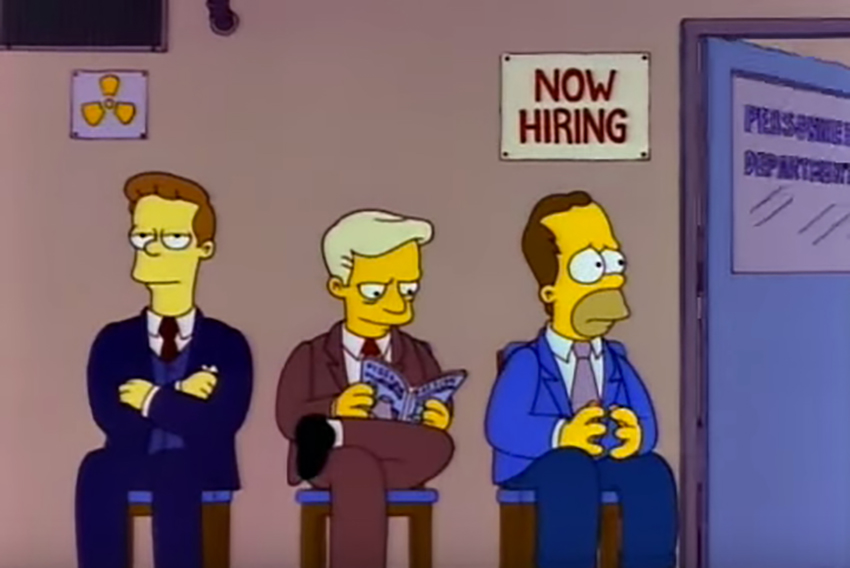
The outfits: These positions at Springfield Nuclear do not require a college degree but they are white collar positions in the early 1980s. Homer Simpson is wearing a blue sport coat and slacks where the other two candidates are wearing full suits with vests. They are also better put together, in general, along with having the added benefit of not being Homer Simpson.
John Locanthi is a contributing writer at the Willamette Week, where he tastes the hastily made, modestly priced food of the common man in a weekly column called Haute-N-Ready.
This work is licensed under a Creative Commons Attribution-ShareAlike 4.0 International License.

